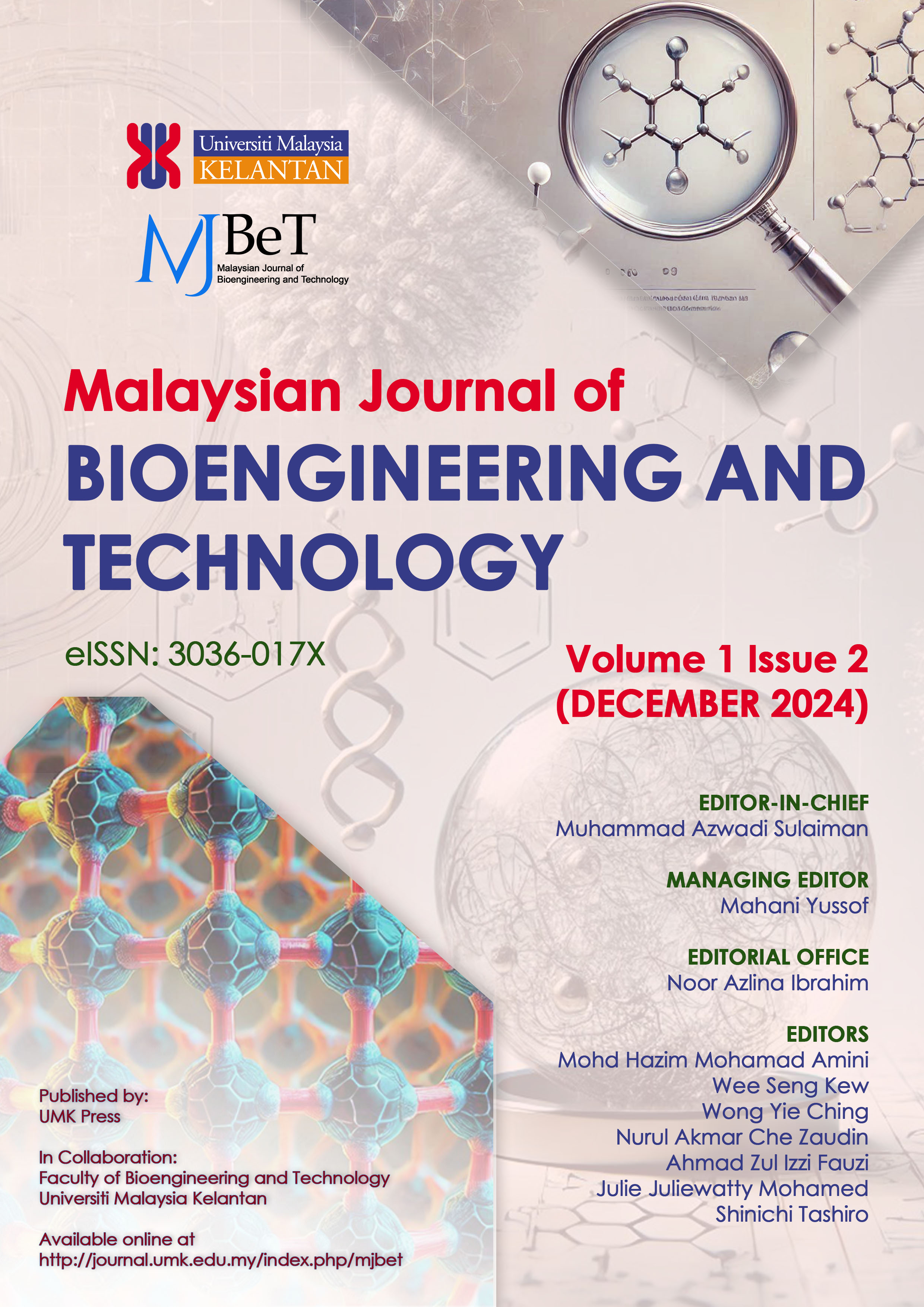A Review of Enzymatic Pretreatment of Lignocellulosic Biomass for Bioenergy Conversion
DOI:
https://doi.org/10.70464/mjbet.v1i2.1461Keywords:
Biomass conversion, renewable energy sources, fermentation processes, sustainable bioenergy, pretreatment technologiesAbstract
Lignocellulosic biomass, composed of cellulose, hemicellulose, and lignin, is an abundant and renewable resource with immense potential for sustainable bioenergy production. The methodology could potentially lead to a reduction in fossil fuel reliance and greenhouse gas emissions. However, its complex structure poses significant challenges for conversion, and effective pretreatment technologies are needed to make the sugars more accessible for fermentation. Enzymatic pretreatment for biomass is turning into a promising biofuel production route because it requires less energy and has a lower environmental impact. This method improves biomass solubilization, sugar release, and volatile fatty acid production by reducing particle size and increasing substrate solubilization. Key enzymes such as cellulases, hemicellulases, and ligninolytic enzymes are critical to breaking down the complex structure of lignocellulose. The efficiency of enzymes has improved dramatically over the years due to advances in enzyme discovery, molecular modifications, and production. Enzymatic saccharification has been advanced by approaches that include solid-state fermentation, enzyme immobilization, and optimization of reaction conditions. Enzymatic pretreatment is not free from drawbacks as it also requires high enzyme loadings because of lignin recalcitrance, and, while using the so-called hydrothermal pretreatment, harsh conditions to advantage are unavoidable due to high solids loading. As a response, improved methods such as flow-through hydrothermal pretreatment or combined techniques are being investigated to increase sugar digestibility and decrease the formation of inhibitory products. Future directions should focus on finding novel pretreatment methods that are sustainable and cost-effective for large-scale applications. Through methods including sulfite pretreatment and enzyme engineering combined with CRISPR-Cas gene editing and artificial intelligence techniques, subprocesses of bioconversion can be optimized to improve the overall process. Enzymatic pretreatment has excellent potential to improve the stages of bioenergy production and provide sustainable energy solutions.


